Best A/B Testing Tools: My Top Recommendations for Marketers
No two companies’ customer bases are alike. So, there’s no one-size-fits-all formula for designing an optimal website, crafting the most enticing copy, or building the most effective product. This is where A/B testing tools come in handy.

No two companies’ customer bases are alike. So, there’s no one-size-fits-all formula for designing an optimal website, crafting the most enticing copy, or building the most effective product. This is where A/B testing tools come in handy. The right tools help you test and optimize your website or app design, copy, product, and — most importantly — create an experience tailored to customer needs. Read on to discover high-quality A/B testing tools that will help you discover your customers’ unique preferences. Table of Contents As you’ll see in my list of top tools, you can explore a ton of features to run your ideal tests. But, what’s really important in an A/B testing tool? Here’s what you should consider. Beyond that, all tests should be “flicker-free,” meaning there is no lag in load time that can affect your visitors' on-site experience. Testing should be seamless and continuous once applied and running. Now that we’ve established the basics, which testing tool best fits your needs? I considered my process for buying and using A/B testing tools. Here’s what I look for. It seems straightforward, but I’ve seen teams buy too little or too much with their A/B testing platform because they had unclear goals and expectations. Know your business goals and desired outcome metrics before speaking to vendors. Do you want to increase web traffic? Drop your bounce rate? Resolve cart abandonment? You don’t need to know every detail (that’s why you’re exploring tools), but a general guide of expectations will help you have productive sales conversations. There’s nothing quite like getting into the tool itself and seeing what it can do before committing it to your tech stack. Personally, I like a self-guided demo or free trial access to platform functions. The marketer in me appreciates a company’s desire to turn the demo process into a qualified lead for the sales pipeline. But, I’ve found that more barriers to actually getting to the product often lead to more challenging implementation and user experiences. In the same vein as free trials, I look for clear pricing as an indicator of a tool’s overall usability. I totally appreciate how variable A/B testing pricing can get with different functions and user counts, but I want to get my boss’s approval on budget quickly. I can’t waste time going through the entire sales process to then discover I need 10x the money. Plus, generative AI searches can give price estimates based on other users’ experiences if a vendor is unwilling to provide a range. Why hide your price? Ideally, any new tool should make your marketing life easier. Price is certainly a driver in choosing your tool, but don’t skip integration checks with the other tools you’re running. I’d say it’s usually worth a few dollars more to buy a tool that easily slots into everything you already spend money on. Check tools like your content management system (CMS), customer relationship management tool (CRM), and marketing tactic tools (e.g., email or social media scheduling). Vendors should be upfront about integration capabilities. You often find advice about picking software with “easy-to-use user interfaces.” But, what is easy to use? That answer depends heavily on your knowledge of A/B testing, the functions you require, and the ways to deploy tests and gather data. Heavy users might prefer a busier, data-filled UI; novice users might seek simplicity. I typically avoid UIs that are overly cluttered or don’t demonstrate hierarchical thinking (i.e., Why did the vendor hide the test results page under a different menu?). Know your needs and let those define the right UI for you. Audiences are complex entities. Demographics, psychographics, geography, and behaviors can all factor into effective A/B testing. While any tool should offer audience targeting and segmentation, spend more time investigating tools that give you more control over your testing variables. You can fine-tune your tests and get results hyper-targeted for your audience. Time is precious, and your bosses will be very eager to get results from A/B testing quickly. Naturally, that desire will compete with the need for time to generate statistically significant data and useful insights. The best tools will help you meet these demands. Options like multivariate testing go beyond the traditional A/B split test, running multiple variable combinations for boosted results. And rapid iteration capabilities will help you run a bunch of high-quality tests to get good data faster. Your A/B testing tool should work, period. When your tool crashes, you miss valuable time and data-gathering opportunities. A/B experiments should run as continuously as possible so you get significant, applicable results. Ask your vendors for uptime/downtime data over the past 12 months. Target an uptime percentage at or above 99.9%. Even if you’re a marketing team of one, somebody else in your company will want access to your A/B testing tool. Or, if you manage a larger team, you’re probably delegating testing tasks. Your tool should make that team management process easy. Ideally, a tool granting different permission levels helps limit unwanted tinkering while still giving access to critical data and insights to people who need them. A/B testing introduces a ton of potential failure points and frustrations. Integrating code snippets onto your site, accurately monitoring your data, trying many on-page combinations — a lot can break. When things break, can you reach your vendor easily? Do they offer live support? Do they offer a comprehensive knowledge base or forum where you can self-serve if needed? Don’t wait until you’re struggling to investigate support options. Consider these points as we walk through the best A/B testing platforms and their capabilities below. Don't know where to start with A/B testing? This tool may be just what you need. HubSpot’s A/B test tracking template is a how-to guide for instruction and inspiration in an easy-to-use spreadsheet — no complex code changes or calculations required. And it comes with a statistical significance calculator to help you understand if your tests were wins, losses, or inconclusive. It's ideal for businesses just getting started with A/B testing or for companies needing to track their existing tests. Price: Free Convertize helps you design A/B tests to learn the most about your audiences and maximize conversions. If you’re newer to A/B testing or running smaller tests, Convertize should be at the top of your list. The tool has an incredibly easy setup process: plug in your URL, set a few goals, insert a code snippet, and start testing. I was up and running in about five minutes. And I did all that as part of a free trial (I enjoyed not sharing my credit card number). A standout feature is Convertize’s library of suggested tactics and plugins. The tool has around 250 tactics preloaded into its editor. When you set up your A/B tests, you can incorporate suggested tactics directly onto your pages. Some simply suggest changes (e.g., Add a testimonial), while others adjust copy or layout intelligently. For example, the Dynamic Text SmartPlugin™ automatically adjusts site copy based on the text used in the PPC ad a user clicked to reach you. It keeps branding consistent and reduces bounce rates so you get better user data. Convertize runs on the lower end of the price spectrum, and sometimes, you get what you pay for. Live support can be tougher to access, though the company maintains a healthy knowledge base for self-service needs. My key takeaways: Overall, for those new to A/B testing tools, Convertize offers a range of useful, easily understandable, and affordable options to get you started quickly. Price: The Solo plan starts at $59/month for 20,000 monthly site visitors. You’ll get a small discount if you pay annually. The Team option is for enterprise users and scales pricing based on expected monthly visitors. The free trial is 14 days and requires no credit card to sign up. Selection criteria: Zoho PageSense offers an affordable solution to learn about your site visitors’ behavior and preferences, so you can build personalized experiences. PageSense is another great option for businesses running smaller-scale A/B tests. You get a ton of easy-to-use features that take a few minutes to prep. Shout out to an easy free trial process — I got into the system and tinkered with my testing parameters in no time at all. I really like PageSense’s testing wizard. It’s easy to walk the path from the page editor through goal setting and audience and test configuration. It’s a clean look and simple UI while still allowing for in-depth adjustments for power users. PageSense also offers a built-in forecasting tool that estimates conversion rate trends for each of your variations. You can change and update your site before tests are completed while still maintaining high confidence in the tests’ outcomes. For time-pressured marketers, it’s nice to show movement earlier in the testing process. My key takeaways: Like Convertize, the lower price point limits functionality and customer support. And, your starting price scales quickly as you grow, so monitor your user count carefully. But, at this price, Zoho PageSense makes … sense. Price: For 10,000 monthly site visitors, you’ll pay $20/month, or you can purchase the annual plan for $144. The price scales depending on the number of expected visitors and feature sets. Selection criteria: Omniconvert is a CRO platform with an A/B testing tool to run tests on desktop, mobile, and tablet. It’s best for ecommerce businesses. If you’re running an ecommerce platform, Omniconvert Explore is tailored specifically for you. When you launch your free trial, your choices for “my type of site” are ecommerce, lead gen, or publishing. I like how Omniconvert knows its audience and keeps its focus tight on ecommerce. Once on-platform, you can hop into A/B testing and start setting up tests right away. I would not recommend this tool for newer users; you need to know a bit about test design to pick it up. My key takeaways: If you can stand some learning curve, this tool offers a comprehensive collection of A/B testing resources for small and large teams alike. Plus, the company’s customer service gets especially high marks from G2 users — a selection criterion you don’t want to skip. Price: You’ll find A/B testing tools included in Omniconvert Explore. For 50,000 tested monthly users, it’ll run $273/month billed annually (so, $3,276 due at signup), or $390/month if you pay month-to-month. Selection criteria: At this point in our A/B testing journey, I started running into sales-led demos and “free trials” that wanted credit card numbers or phone numbers for sales calls. Again, I appreciate companies’ decisions to go those routes — it’s a highly competitive market, as this list of top tools shows. So, the following reviews come from previous personal experience, third-party reviews, and vendor-provided content. VWO is an A/B testing and conversion rate optimization tool for enterprise brands. I’ve heard good things about VWO Testing (the specific A/B testing tool VWO offers). And, it receives relatively high marks on G2 from over 750 users, a strong sample population. As a tool meant for enterprises, VWO Testing offers a wide range of the best A/B testing resources meant for large monthly user counts and many tests. Looking into the platform itself, VWO Testing offers a clean dashboard and easy-to-follow wizards to build and conduct tests. The tool also earns praise for its powerful integrations that let you push data into your external tools, connecting your platforms and streamlining your processes. Users also appreciate how fast you can set up VWO Testing and the high level of customer support you get. My key takeaways: VWO Testing is meant for enterprise users, so it might be too much horsepower for smaller teams or companies not ready for heavy testing. But, for those willing and able to commit the cash and resources, this tool gives you a lot to work with. Price: Free to begin experimenting with. You can buy VWO tools individually, and your price will vary depending on the number of tested monthly users. For desktop web experience testing, plans start at $393/month, billed annually (or $4,716 due at sign-up). Selection criteria: AB Tasty’s conversion rate optimization software helps your teams build and run A/B tests, split tests, multivariate tests, and funnel tests. AB Tasty is what enterprise-level A/B testing implementation should look like. The company’s platform is extensive and gives you a lot of control over your testing. For instance, you can set goals for your experiments, so your data reports help you focus on the exact conclusions you’re looking for. The company also recently released its “EmotionsAI” resource, which incorporates emotional data into testing scenarios. Essentially, the tool analyzes what emotions are driving users to act (e.g., quality, security, comfort, community) and applies those learnings to your tests. It’s an interesting AI application; I’ll be curious to see it develop. One of the major challenges G2 users flagged was AB Tasty’s learning curve. While the tool offers no- and low-code options, users noted that to get the most from AB Tasty, they needed some coding experience. And, while I don’t have pricing options to share, others online have noted AB Tasty is considerably more expensive than other options on our list. My key takeaways: I’d recommend AB Tasty only for power users who want significant control over their A/B testing platform. It’s powerful and chock full of features — so make sure you need those features for your business goals before buying. Price: AB Tasty’s pricing is custom-quoted. You’ll need to submit a form to the company and wait for its sales team to contact you. Selection criteria: Adobe Target offers everything you need to run tests across multiple platforms. I’m drawn to how well Adobe manages the content piece of A/B testing. For instance, you use Experience Fragments (XF), or modular content blocks, in your tests. These blocks travel across test variations, helping you whip up A/B testing material quickly. Plus, it’s Adobe, so everything is sleek and designed well. Adobe is also investing heavily in AI resources across all products, including Adobe Target. The company specifically calls out how its AI tools help “better personalize experiences at scale” for users. Adobe Sensei (the AI engine) does seem to offer interesting scalability features that make testing easier and more effective. The company covers more technical details here. Adobe makes great products that offer a ton of features. But, you’ll pay for the privilege. And, the feature set can overwhelm many novice users (not to mention learning the Adobe-specific terminology). My key takeaways: If you’re seeking an enterprise-grade platform and are already deeply invested in the Adobe environment, Target is an excellent choice. Price: You’ll need to request a quote from Adobe’s sales team. It’s an enterprise-grade tool within the Adobe Experience Cloud. While all quotes are customized, this tool is likely not a budget-conscious option for most teams. Selection criteria: Crazy Egg is website optimization software that helps you easily test variations of your site pages with a single snippet of code. Its cost makes it ideal for small businesses. Crazy Egg just gives you a ton of features for the price. It’s actually staggering how much you get at even the least expensive level. For a small business-focused platform, you get A/B testing tools that belong in more enterprise-grade platforms and at a fraction of the cost. G2 users especially enjoy the Snapshots feature. Crazy Egg will give you a side-by-side comparison of your detailed reports to learn how your changes and optimizations compare. And, the company’s Heatmaps feature earns high marks from users. The maps are detailed and provide useful tactical feedback on visitor interactions with your site. There’s simply a lot here to like as a marketer running A/B tests. My key takeaways: I wanted to put Crazy Egg higher on this list, but the “free trial” comes with strings. I don’t like the practice of automatically enrolling you in a $1,000+ annual plan. Still, if the trial convinces you that Crazy Egg is for you — and it is a great feature set for the price point — maybe letting it roll into an annual plan is the right call. Pricing: For the smallest plan, you’re looking at $99/month billed annually (so, $1,188 at signup). The company offers a 30-day trial, but you need to enter a credit card, then cancel your plan before you’re billed. Selection criteria: Kameleoon helps you build web experiments to learn more about your audience groups and what experiences they prefer. Users on G2 really like Kameleoon. And, as I explored the platform, I liked it, too. The tool offers many of the same features you’ll find throughout this list. You can quickly compile as many A/B tests as you want. Kameleoon has low-code options for novices and code editors for more advanced teams. And the company is incorporating AI to better personalize the results and deliver more useful insights for your team. The platform also integrates easily into many other tools, so it shouldn’t be a burden on your tech stack. And, apart from pricing, Kameleoon presents themselves as straightforward and honest. I liked reading the company’s content while prepping this review — they’re simply clear about what they offer. My key takeaways: Kameleoon is expensive based on the limited pricing data I could find. At the higher price point, you need to be ready to deeply invest in A/B testing to get the most from Kameleoon. Still, it’s a solid platform with strong reviews backing it up. Price: Another one where you submit a form to the sales team. But, research on the company’s site shows the average license cost at $35,000. Your price is also fixed based on your previous year’s average monthly tested user count. So, you won’t get surprise-billed if your traffic shoots up. That’s actually quite nice. Selection criteria: Once you pick your best A/B testing platform, how do you get the most out of it? You know your business goals and desired outcomes. Now, you need to focus on what you want from your A/B tests. Align your team on your testing priorities to set a firm foundation for success. You’ll learn more about statistical models and data-driven insights as you spend time with your chosen platform. But, throughout the testing process, use the scientific method to approach your test design: Be thoughtful in your testing approach, and you’ll find it easier and more productive. For detailed guidance on A/B testing in HubSpot, check out these Knowledge Bank articles on A/B testing marketing emails and web pages. Your chosen tool should offer a healthy knowledge base and user guides. There are plenty of A/B testing resources available online to help you learn about the scientific and statistical elements powering test design and experimentation. Encourage your team to dive into these resources and build their testing knowledge and skills. In turn, they’ll better use your chosen platform to get the most from your spend. All told, I’m confident any A/B testing platform on this list can help you build better user experiences. Explore free trials and demos. Equip yourself with key business goals and desired outcomes to guide your buying experience. And, experiment with a few options to see what’ll fit your team the best. With testing, time can be your greatest friend or foe. Meaningful experimental design requires time, energy, and dedication to seeing it through and achieving good results. Don’t delay in building and launching your tests — get to work with the best A/B testing platform for you. Editor's Note: This post was originally published in July 2019 and has been updated for comprehensiveness.
What makes a great A/B testing tool?
How to Pick the Right A/B Testing Tool For You
1. First, know what you want.
2. Find tools that are easy to demo or activate a free trial.
3. Look for transparent pricing models.
4. Ensure easy tech stack integration.
5. Make sure the user interface is friendly to you.
6. Look for deep audience variable control.
7. Confirm the tool has efficient testing methods.
8. Verify it has reliable performance and uptime metrics.
9. Prioritize simple team collaboration and management.
10. Look for easy and comprehensive support features.
9 Best A/B Testing Tools for Your Marketing Teams
1. HubSpot’s A/B Testing Kit [Featured Tool]
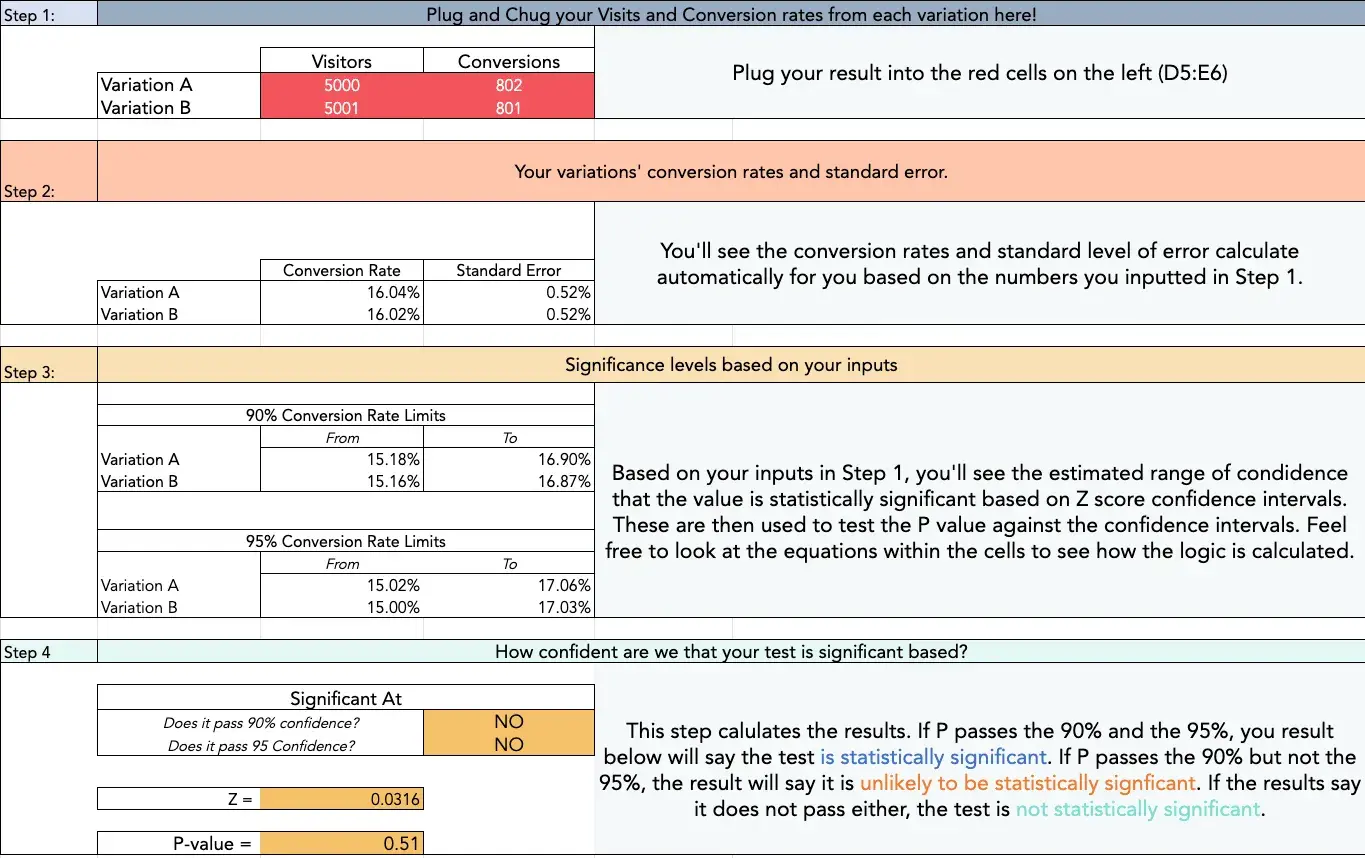
2. Convertize
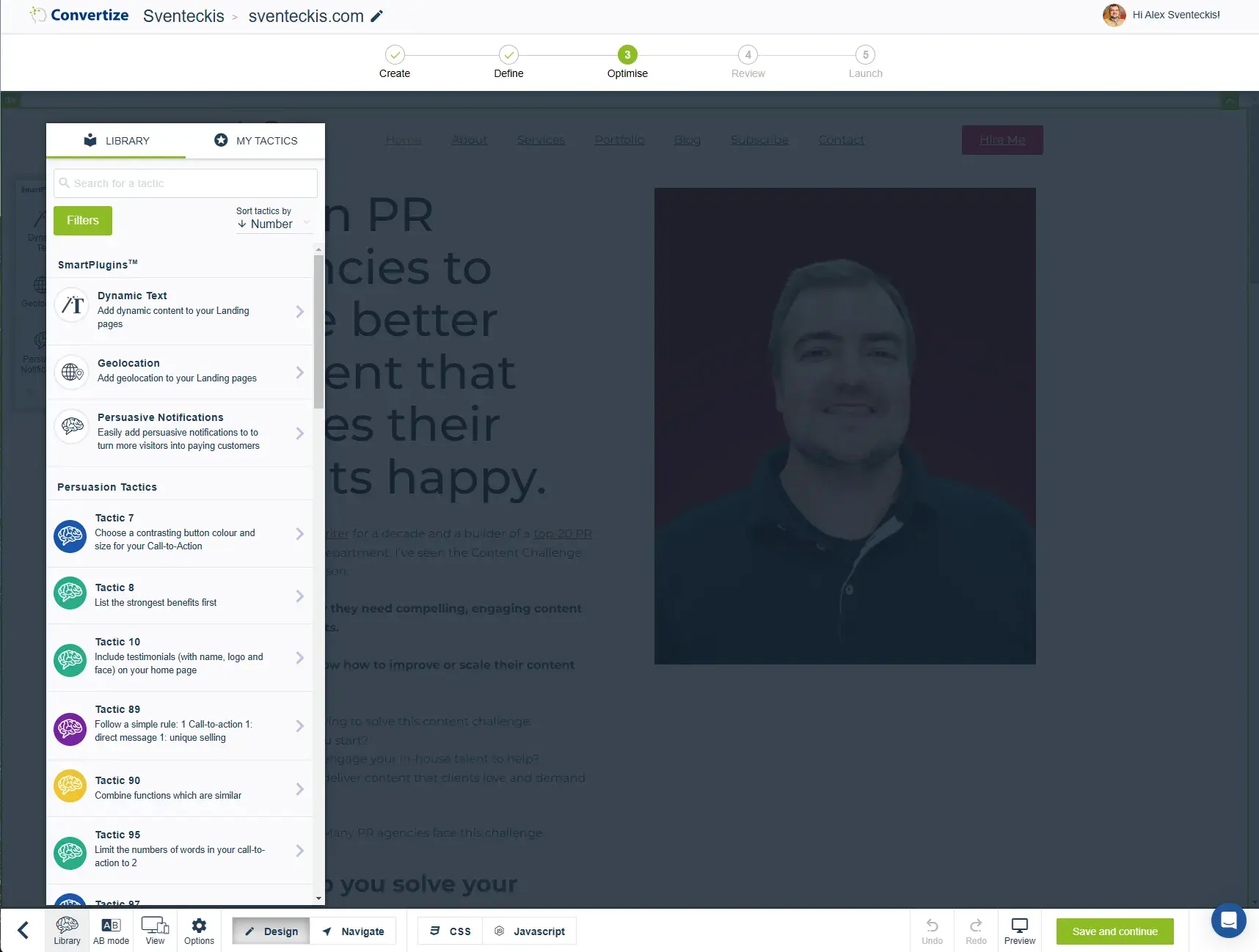
3. Zoho PageSense
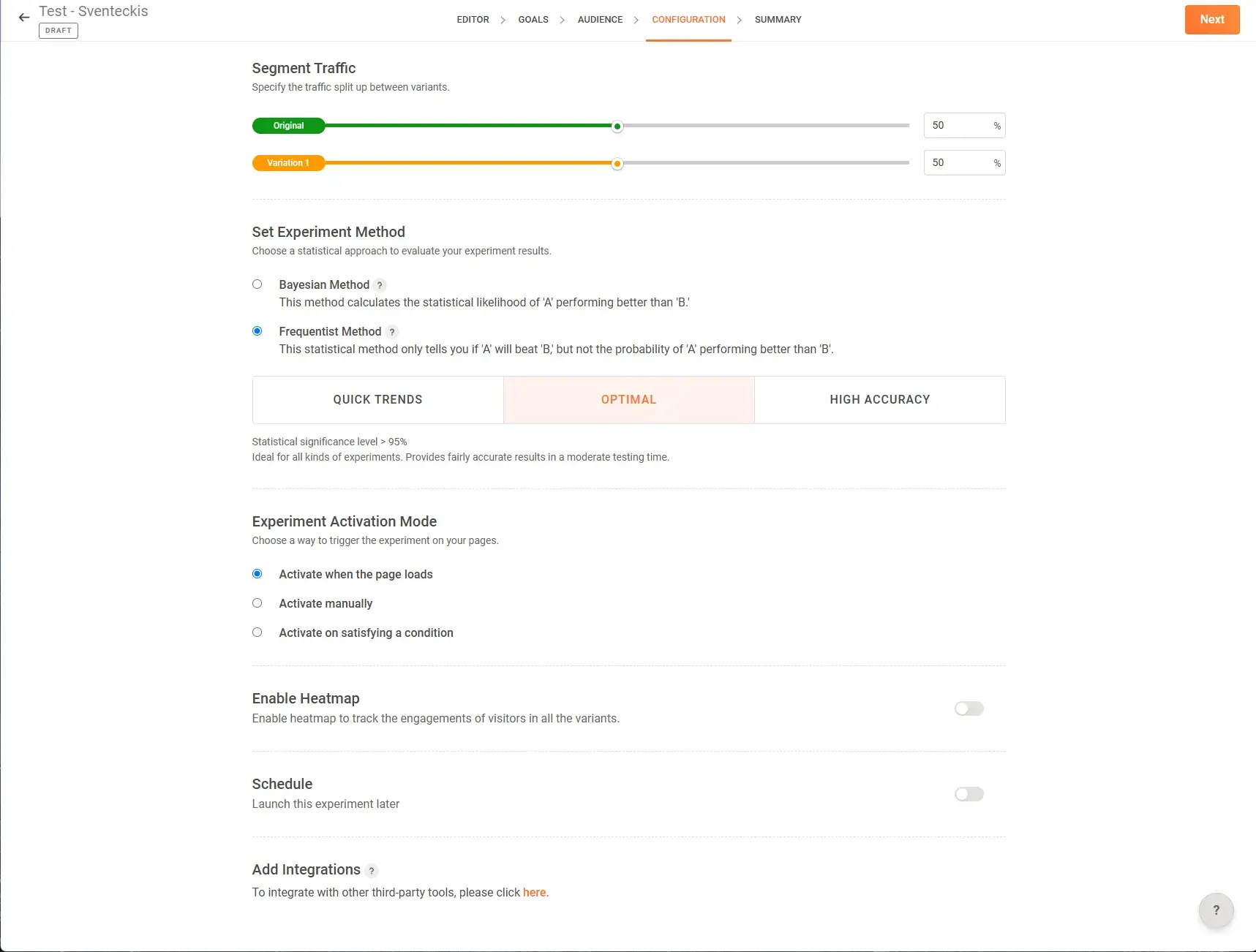
4. Omniconvert
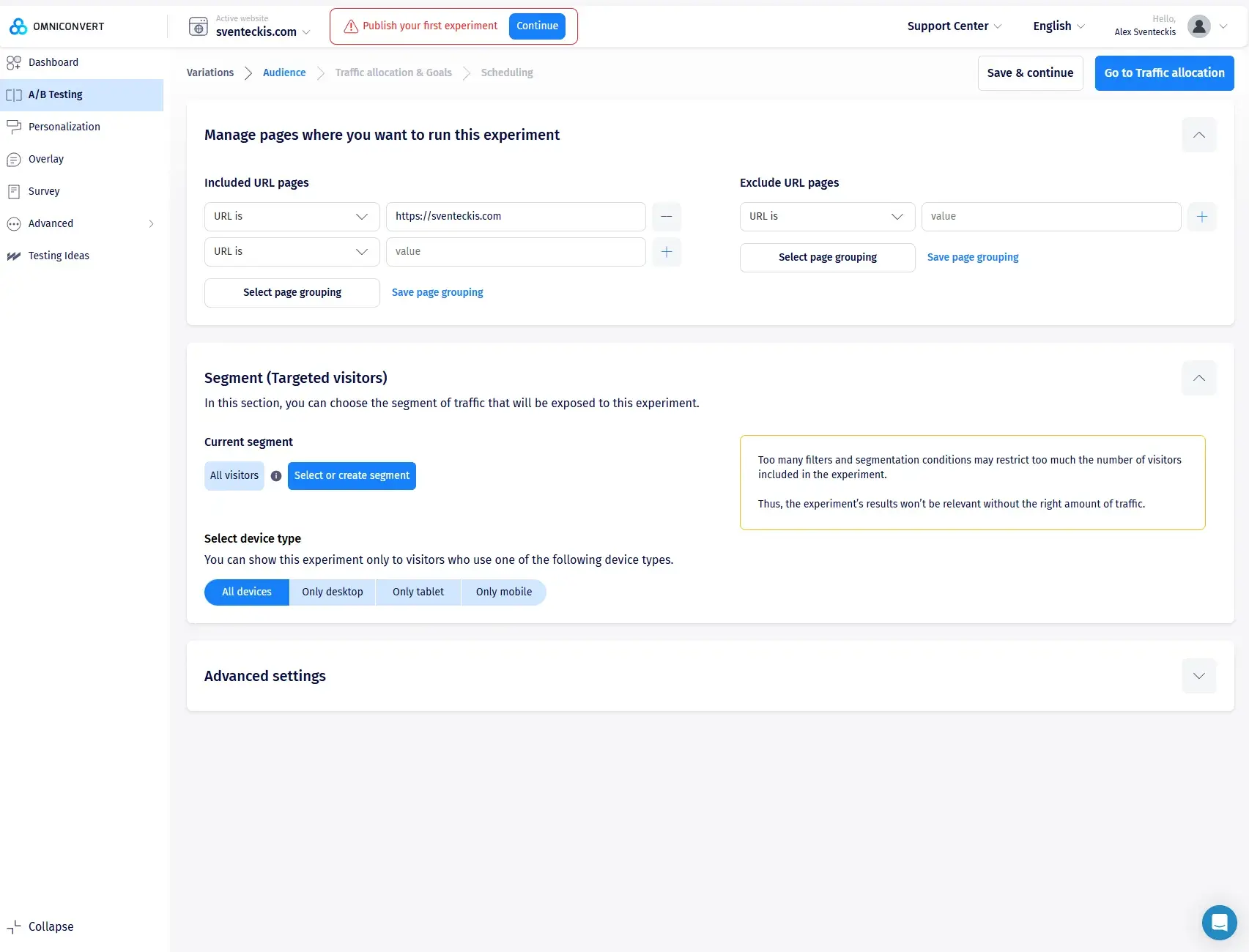
5. VWO
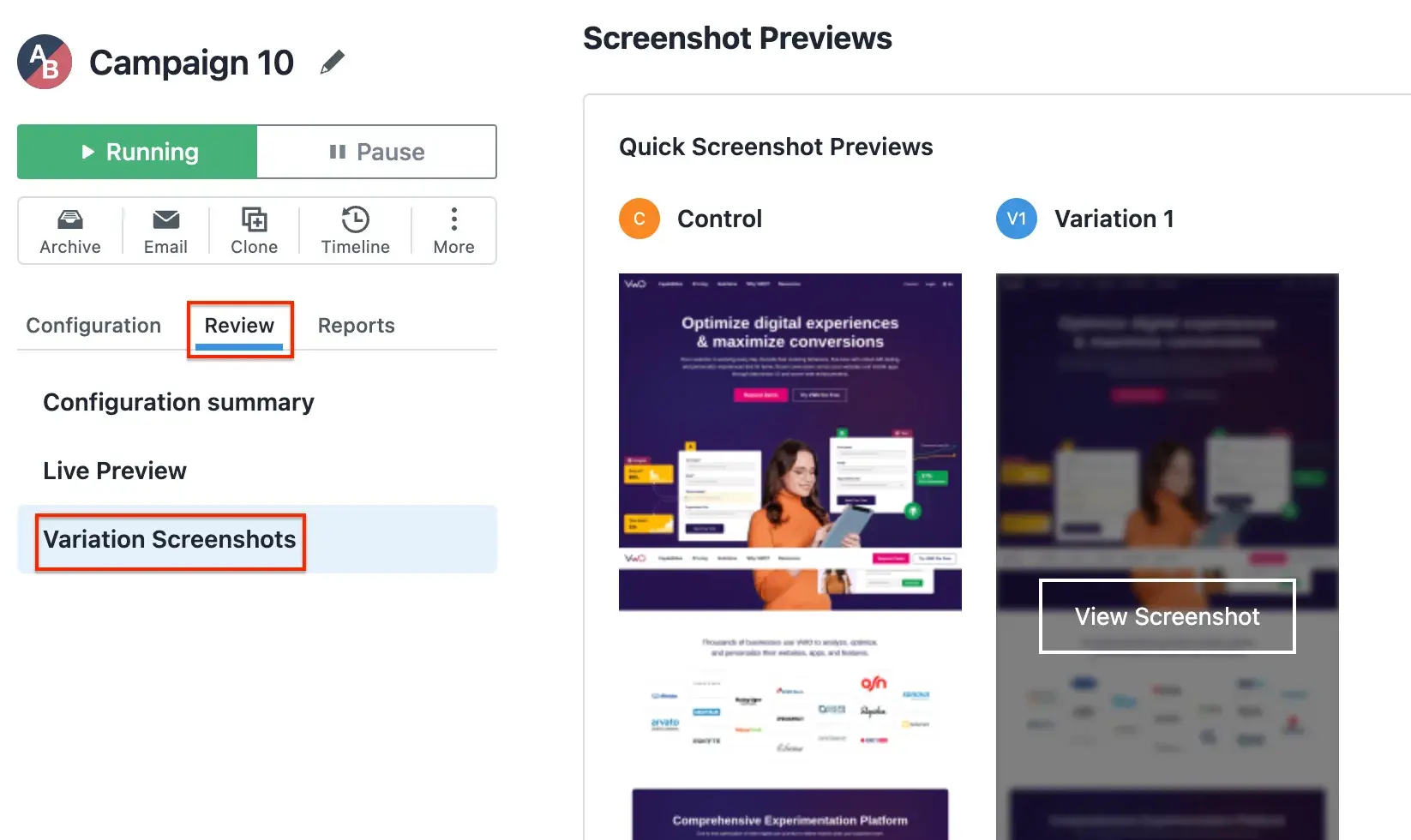
6. AB Tasty
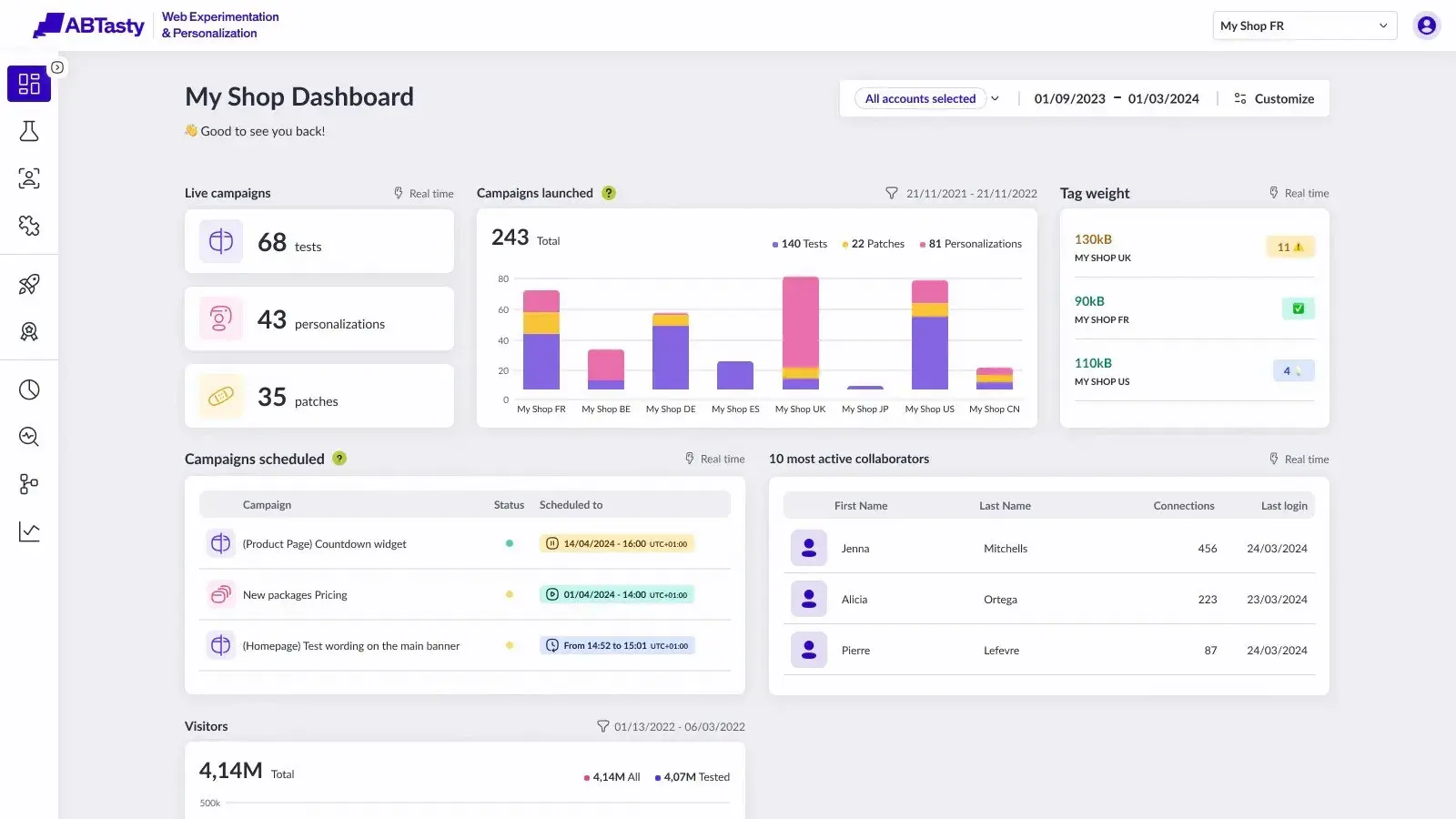
7. Adobe Target
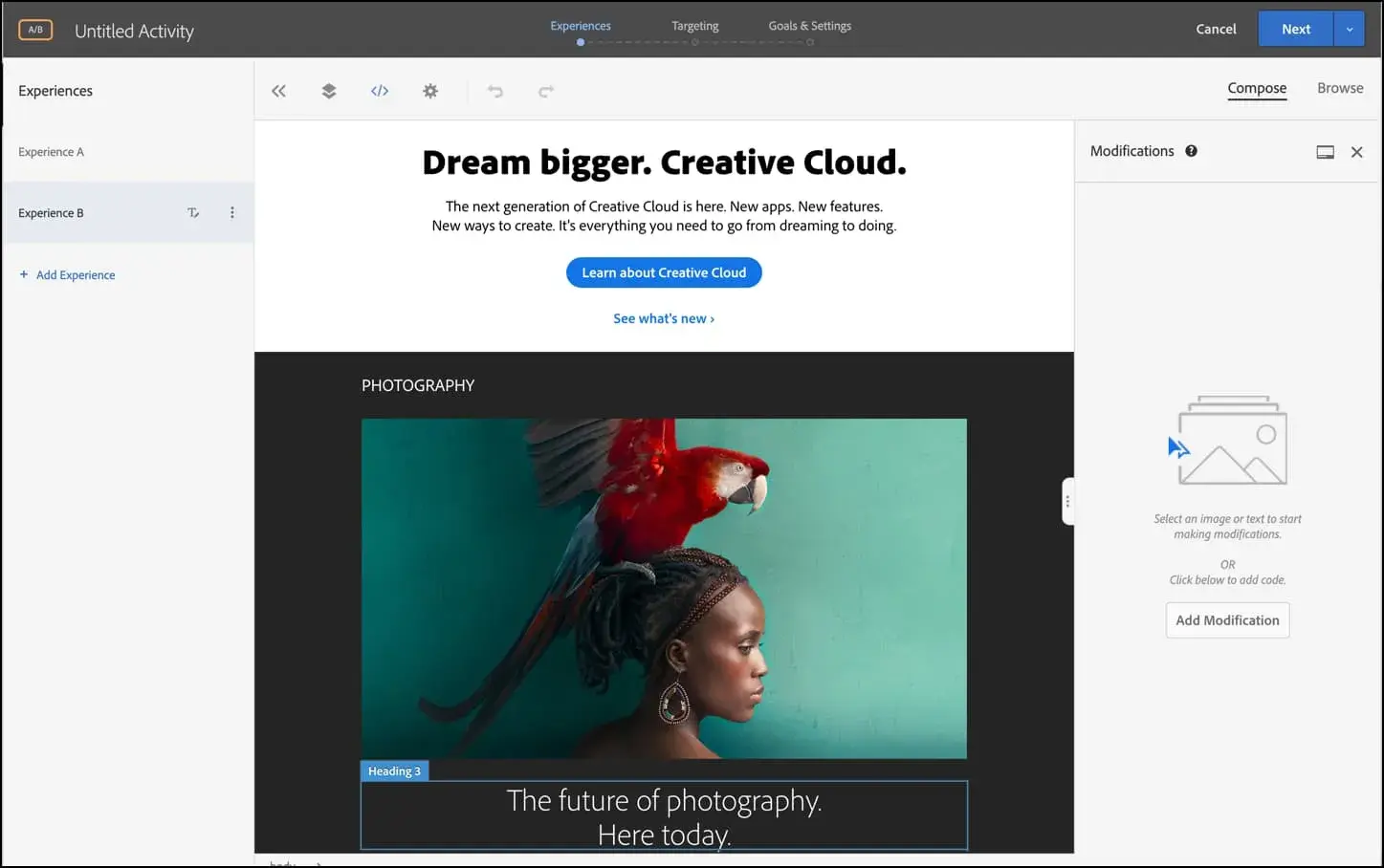
8. Crazy Egg
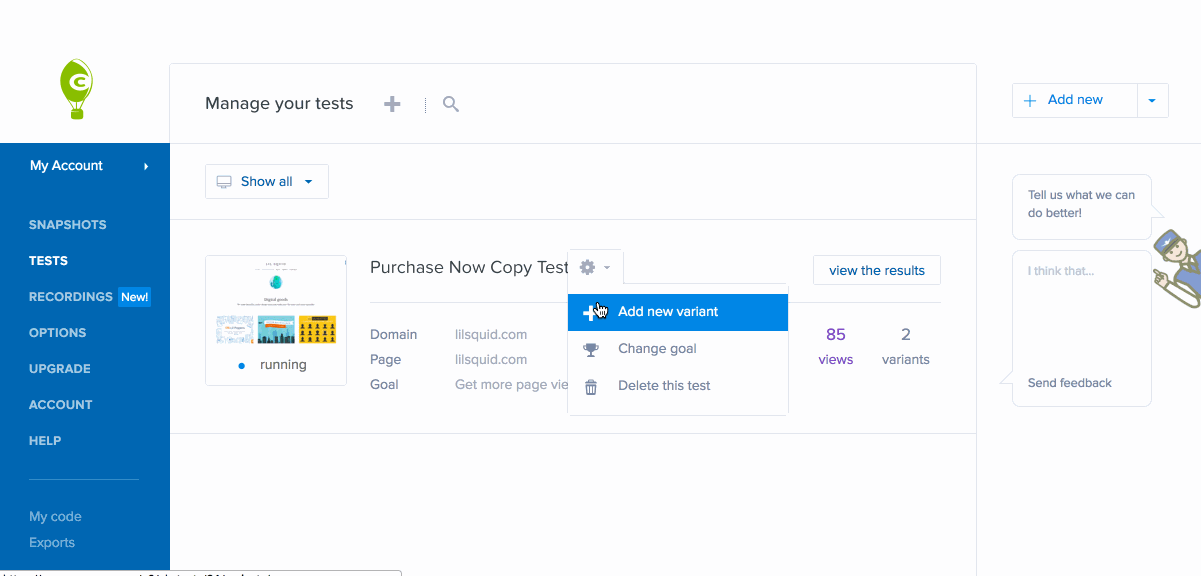
9. Kameleoon
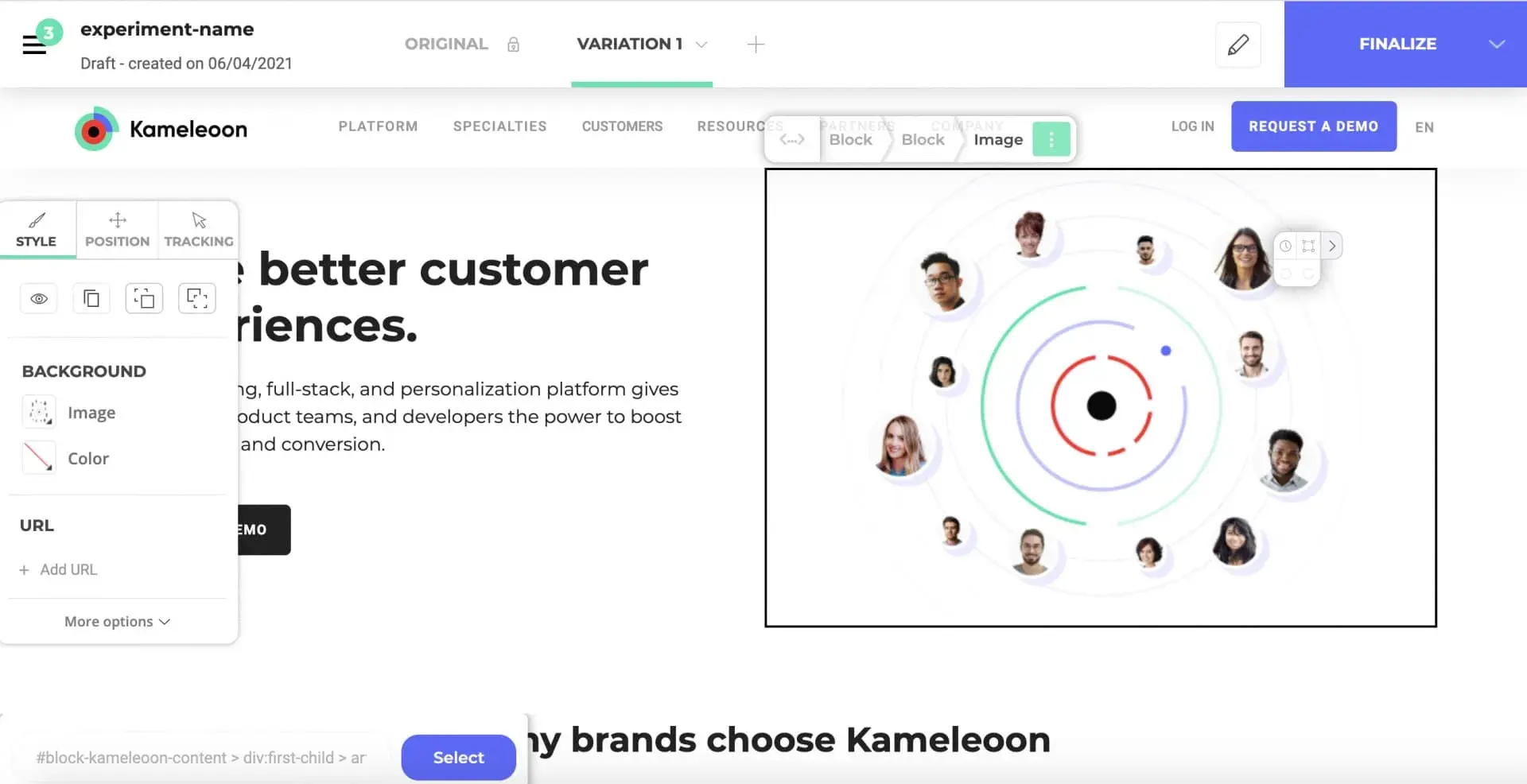
How to Use A/B Testing Services
Get aligned on priorities.
Embrace the scientific method.

Upskill your team.
Dive into A/B testing with a great platform.

 Lynk
Lynk 












![My Tips for Designing Great Website Imagery [With Canva, HubSpot, + 3 More Tools]](https://www.hubspot.com/hubfs/Untitled%20design%20-%202025-02-14T161951.776.png)



















